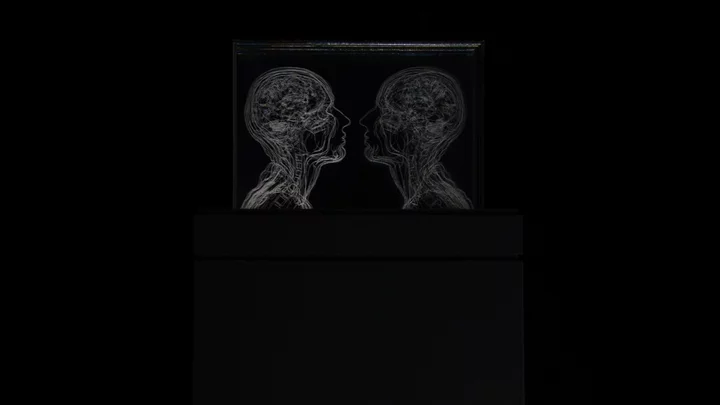Self-portraits
Angela Palmer developed a technique to reconstruct anatomical forms, both of human and animal subjects: she draws or engraves details from MRI or CT scans on to multiple sheets of glass, layer by layer, to create three-dimensional sculptural drawings 'floating in space'.
She was inspired to adopt this technique after seeing a laboratory model by the Nobel winning scientist Dorothy Hodgkin, which is in the History of Science Museum in Oxford. Hodgkin's model, which was made in the 1940s, represents the penicillin molecule as a three-dimensional form, drawn in a thick black pen on layers of acrylic, held together by bolts. Palmer said: 'I presented the sheets on a vertical rather than horizontal plane, and took details from CT slices through the human head. This method allowed me to expose the extraordinary inner architecture concealed beneath the surface of the human form, thus creating the most objective form of portraiture. The image floats ethereally in its glass chamber, but can only be viewed from certain angles; from above and the side it vanishes and the viewer suddenly finds himself staring into a void.'














